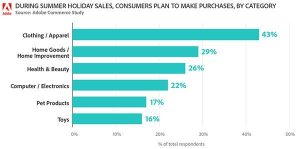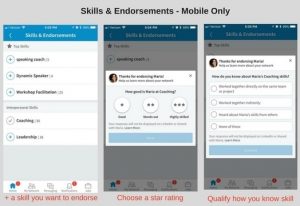As a consumer, there are few things we value more than convenience. There’s nothing like navigating to a website and finding exactly what you need. If you want to expand your online business, you should structure your website in a way that puts users first.
A user-friendly website means both first-time customers and dedicated brand loyalists will have an easy time finding what they are looking for and maximizing the value of your brand. If you get this part of your business right, you can expect to see an improved retention rate, more sales, and increased engagement.
There are plenty of steps you can take to make your website easier to use. Today, we will go over several easy tips you can use to improve the experience consumers have on your site. By the end, you’ll know what steps you should take to build a user-friendly website and grow your small business.
Ready? Let’s get started!
Leverage the Power of Personalization
The first thing we want to talk about is personalization. When a user visits your site multiple times, they expect to see elements of their experience personalized. You can keep people engaged with your brand for a longer time if you consistently deliver high-quality, relevant personalization options.
One way you can adjust the experience for each user is to show products from specific categories on their homepage. For instance, if you own an online clothing store, you may want to show repeat customers categories they purchased from during their last visit. If you know what kind of products they want to see, you can meet this need from the moment they make it back to your website.
It’s also possible to personalize your sidebar. You can fit a wide range of items in the sidebar of your website. As visitors interact with your site and complete specific actions, you can change which offers and calls-to-action appear on the sidebar space.
Let’s say a user was browsing your product catalog, added the product to their shopping cart, but abandoned your site before completing their order. You can encourage them to finalize their purchase next time by including a personalized promotion on your sidebar that features the product they almost bought last time.
Improve the Usability of Your Blog
Business owners understand the value of creating and maintaining a company blog. Consumers are interested in long-term experiences with brands. It’s not enough to sell a great product; you have to provide additional value to your audience. Luckily, it’s easy to add to your value proposition when you’re consistently posting high-quality content.
If you want users to make the most of your blog, consider restructuring your layout to make it easier for users to browse your blog. There are quite a few things you can do to streamline this experience for visitors.
One feature that can make your blog easier to use is a search bar. Now, visitors can type in exactly what they are looking for the next time they land on your site. As a result, they are more likely to find the value they are looking for and will continue engaging with your brand.
You can also dramatically improve conversions by adding breadcrumbs to your post. Breadcrumbs are essentially the path a visitor goes down to make it to a specific page. If a reader goes down a metaphorical rabbit hole, they can quickly get back to where they started when you make breadcrumbs a key feature of your blog.
We also suggest thinking carefully about how you interlink to other posts on your site. Ideally, your posts should connect naturally and answer any questions a visitor may have on a specific topic.
Boost Loading Times
Have you ever visited a website that took forever to load? If so, you know that this is one of the most frustrating experiences you have can have while browsing online.
Research shows that websites that perform poorly tend to see fewer sales and subscriptions. In fact, a 1-second delay in loading times translates to a 7% loss in conversions. The longer visitors have to wait to access your site, the more potential customers you will lose.
The good news is you don’t have to settle for an online store with lackluster performance. There are steps you can take to improve the overall performance of your website, which leads to more happy customers.
We recommend downloading a caching plugin to improve loading times for repeat visitors. Caching stores frequently accessed information and makes a ready-to-use copy for visitors. The result is faster retrieval of this data, which leads to shorter loading times.
You can also improve performance and speed by hosting audio and video content on other sites. For example, you could upload all of your videos to a business YouTube channel and embed the content directly on your site. Once a visitor clicks the link to your video, they will quickly get directed to the appropriate page. Consequently, they are likely to continue engaging with your brand.
Prioritize Mobile Users
If you’re like most people, you have a smartphone. Globally, there are over 5.16 billion mobile users, and that number is expected to rise over the next several years. This information is relevant because it means that most people accessing your website will do so with their smartphone.
A big part of creating a user-friendly website is accessibility. In other words, users should be able to access your site from multiple devices and have a similar high-quality experience.
Device diversity is growing at a rapid rate. Currently, the average smartphone user spends 3 hours and 40 minutes on their device each day. If someone decides to visits your website but can’t interact with any of your menus, they will likely leave and won’t return using another device.
The best way to optimize your site for mobile users is to use a responsive theme and page builders. These tools will help ensure that your landing pages, forms, and general structure works with mobile devices.
If you want to see where you stand, Google has a handy tool for figuring out if your site is mobile-friendly.
Learn from Your Audience
Finally, you can make your site more user-friendly by talking to your audience. Start by creating feedback forms for your website and email subscribers. Reach out to existing users and new visitors and ask them what they think about the design and structure of your website.
You’ll quickly start to identify patterns in responses. Imagine reviewing customer feedback data and discovering that over half of your customers think your payment page is too long and complicated. Based on this data, you can make adjustments to your form and see if the change leads to happy customers and more conversions.
As a business owner or marketer, you have to know how to reach out to your audience and find out what they want. A big part of creating a user-friendly website comes down to meeting customer expectations.
If you know what your audience expects from your brand, you can make actionable changes that impact their perspective. The more feedback you gather, the easier it will become to make changes that benefit your target audience.
Conclusion
Building a user-friendly website is a multi-step process. Use the tips outlined here today to start shifting your business in a customer-centric direction. You’ll start to see more engagement and traffic as your site becomes easier to use. Expect the process of revamping your entire site to take some time. However, going through these steps will increase your chances of success as your business grows.
Business & Finance Articles on Business 2 Community
(40)
Report Post






